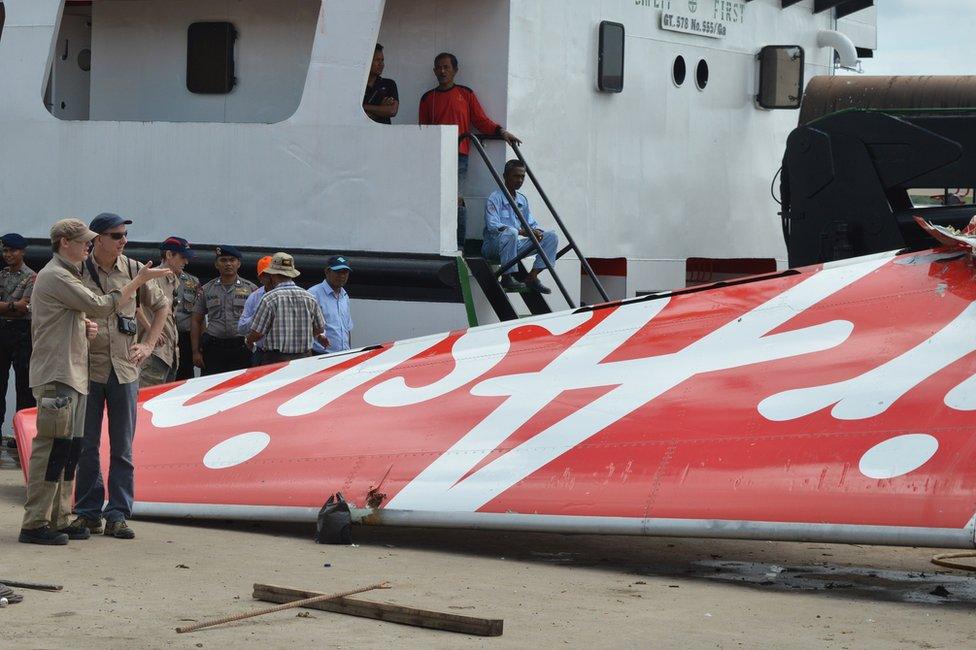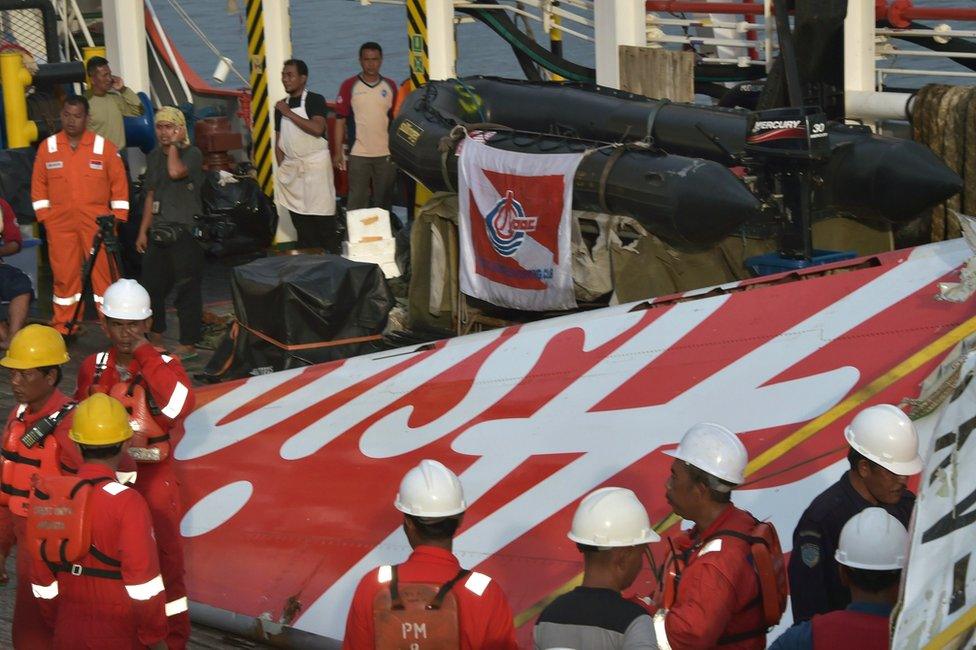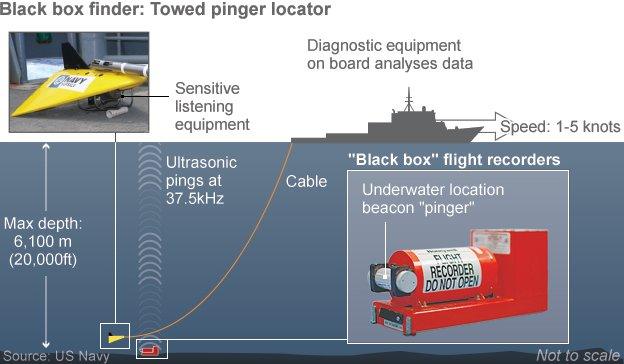Flight QZ8501: What we know about the AirAsia plane crash
- Published

The plane crashed about 40 minutes into the flight
AirAsia Flight QZ8501 crashed into the Java Sea off Borneo shortly after take-off on 28 December 2014 with no survivors.
The Airbus A320-200, carrying 162 people from Surabaya in Indonesia to Singapore, was just over 40 minutes into its flight when contact was lost.
Investigators, who initially indicated that prevailing bad weather might have caused the crash, have since found that a faulty component and crew action were contributing causes.
Wreckage and bodies were recovered floating some 16km (10 miles) from the plane's last known co-ordinates. A total of 106 bodies were eventually found, with the rest still unaccounted for.
Last communication
The jet took off from Surabaya at 05:35 local time on Sunday 28 December (22:35 GMT Saturday).
It was nearly halfway into its two-hour flight to Singapore when it disappeared.

The pilot contacted air traffic control at 06:12 local time to request permission to climb to 38,000ft (11,000m) from 32,000ft to avoid big storm clouds - the last time contact was made with the plane.
The plane disappeared from radar screens shortly afterwards. It did not issue a distress signal.
Why Flight QZ8501 crashed
A report by the Indonesian weather agency initially said bad weather was the "biggest factor" in the crash.
But an official report by transportation officials released in December 2015 found that a fault in the plane's rudder control system, along with crew action, contributed to the crash.
A crack in a tiny electronic module caused the system to send repeated warning alerts to the pilots, who responded by resetting the system.
This caused the autopilot to disengage and the plane rolled to the left. The pilots struggled to right the plane, which stalled and crashed.
The report found that maintenance crew had previously known about the problem, which occurred 23 times in 2014, and resetting the system had been one of several methods used to address it.
AirAsia did not have permission to fly the Surabaya to Singapore route on the day of the accident. The airliner, however, was licensed to fly on four other days of the week.
The Indonesian authorities suspended the company's flights on this route pending an investigation.
The victims
Sribudi Siswardani's 31-year-old son was on board AirAsia flight QZ8501 - on his first trip overseas
There were 155 passengers, including 17 children and one infant. The seven crew were made up of two pilots, four flight attendants and an engineer.
Nearly all the passengers and crew were Indonesians, including six of the crew. One of the pilots was French. Also on the flight were a South Korean family of three, one Briton, one Singaporean and a Malaysian.
Read more: Who were the victims of the AirAsia crash?

Relatives of victims threw flower wreaths into the sea in March as a farewell to their loved ones
Both pilots were described as experienced, with Capt Iriyanto clocking up 20,537 hours of flying time.
His co-pilot, Remi Emmanuel Plesel, had 2,275 hours of flight experience.

Discovery of wreckage

The fuselage of the AirAsia flight was found weeks after the crash
The first debris and bodies from the crash were discovered on the third day of the search, helping officials to narrow down the area to 1,575 nautical square miles of the Java Sea off Borneo.
Officials later reported sighting five large pieces of wreckage on the sea floor.
Items recovered from the sea surface included a life jacket, children's shoes, luggage and what investigators believed to be an emergency exit door and inflatable slide belonging to the plane.
The fuselage of the plane, believed to hold most of the remaining bodies, was also located quickly and eventually retrieved.

Search effort

Civilian aircraft carry two "black boxes" - the flight data recorder and the cockpit voice recorder - each weighing about 15lb (7kg) and protected by steel casing designed to resist water pressure in depths up to 20,000ft (6,000m).
Indonesia deployed a pinger locator to look for the plane's underwater locator beacon.
Flight recorders are designed to survive a crash and being submerged in water. They contain underwater locator beacons which emit so-called "pings" for at least 30 days.
The AirAsia flight's cockpit recorder was found on 13 January, a day after the recovery of the flight data recorder.

